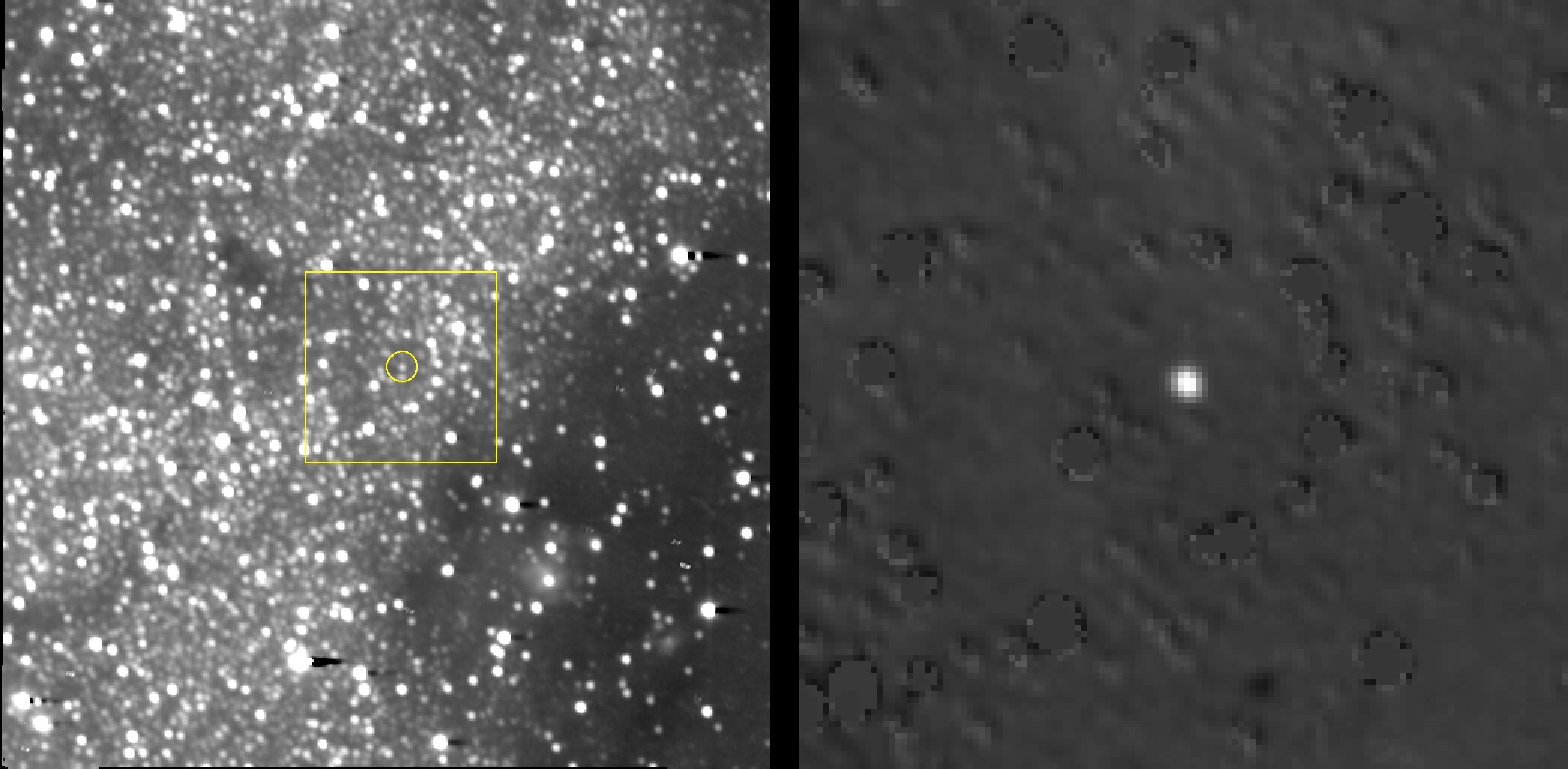Ultima Thule in Sight! New Horizons Probe Snaps New Photo of Its Target

NASA's New Horizons spacecraft has beamed home another glimpse of the distant, icy body it will zoom past just three weeks from now.
The small object Ultima Thule swims amid a sea of distant stars in the new composite photo, which New Horizons snapped with its Long Range Reconnaissance Imager (LORRI) camera at around midnight EST (0500 GMT) on Dec. 1.
At the time, the probe was 24 million miles (38.7 million kilometers) from Ultima and more than 4 billion miles (6.4 billion km) from Earth, mission team members said. [NASA's New Horizons Mission in Pictures]
"As the New Horizons spacecraft closes in on its target, Ultima Thule is getting brighter and brighter in the LORRI optical navigation images," New Horizons project scientist Hal Weaver, from the Johns Hopkins University Applied Physics Laboratory in Laurel, Maryland, said in a statement. "It's now standing out much more clearly among the sea of background stars."
New Horizons took the picture 33 hours before performing a record-setting engine burn to refine its course toward Ultima. The burn — the most distant ever conducted by a spacecraft — lasted 105 seconds and changed New Horizons' velocity by about 2.2 mph (3.5 km/h), mission team members said.
The probe remains on course to cruise within just 2,200 miles (3,500 km) of Ultima Thule (which is officially known as 2014 MU69) at 12:33 a.m. EST (0533 GMT) on Jan. 1. That's more than three times closer than New Horizons got to Pluto during the spaceraft's epic flyby of the dwarf planet on July 14, 2015.
That encounter showed Pluto to be a complex world with a stunning diversity of landscapes, from tall water-ice mountains to vast nitrogen-ice plains to "bladed" terrain similar to the penitente fields of the high Andes.
Breaking space news, the latest updates on rocket launches, skywatching events and more!
New Horizons' encounter with Ultima, which lies about 1 billion miles (1.6 billion km) beyond Pluto, should be similarly revealing. Astronomers have estimated Ultima's size — about 23 miles (37 km) wide — but they know little else about the object. Indeed, it's unclear if Ultima is a single body or a close-orbiting pair.
New Horizons launched in January 2006, tasked with returning the first-ever up-close looks at Pluto. The Ultima Thule flyby is the centerpiece of the probe's extended mission.
Mike Wall's book about the search for alien life, "Out There" (Grand Central Publishing, 2018; illustrated by Karl Tate) is out now. Follow him on Twitter @michaeldwall. Follow us @Spacedotcom or Facebook. Originally published on Space.com.

Michael Wall is a Senior Space Writer with Space.com and joined the team in 2010. He primarily covers exoplanets, spaceflight and military space, but has been known to dabble in the space art beat. His book about the search for alien life, "Out There," was published on Nov. 13, 2018. Before becoming a science writer, Michael worked as a herpetologist and wildlife biologist. He has a Ph.D. in evolutionary biology from the University of Sydney, Australia, a bachelor's degree from the University of Arizona, and a graduate certificate in science writing from the University of California, Santa Cruz. To find out what his latest project is, you can follow Michael on Twitter.
